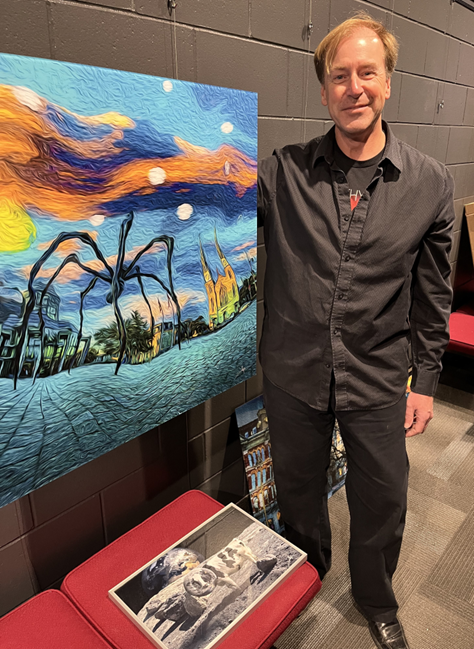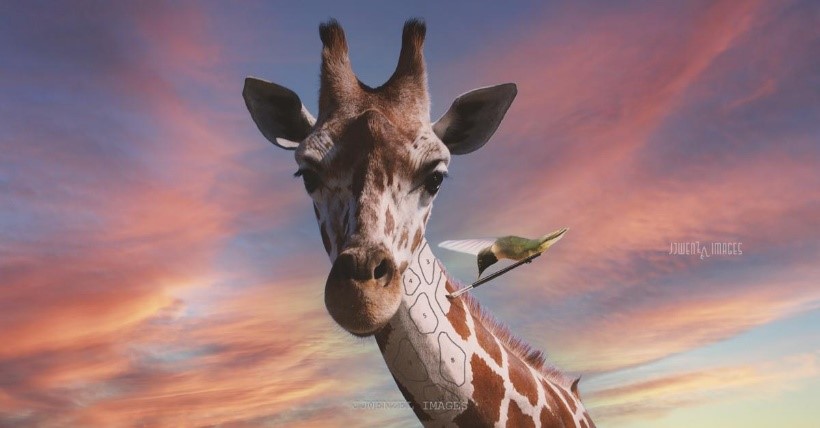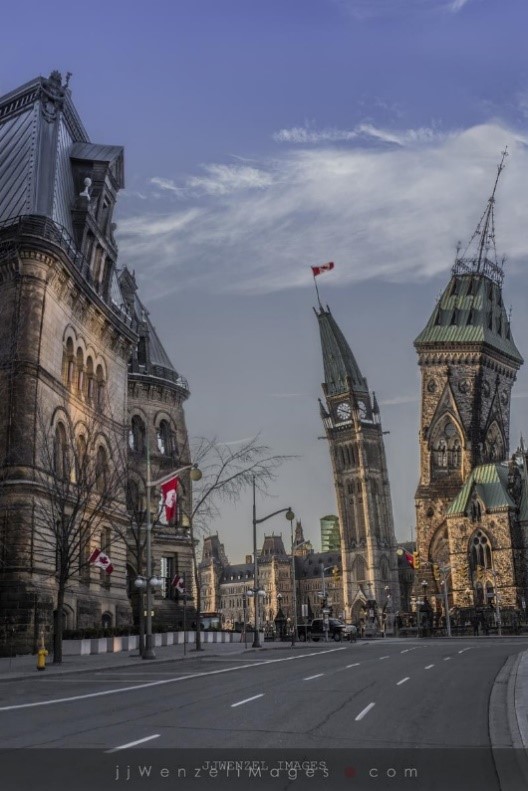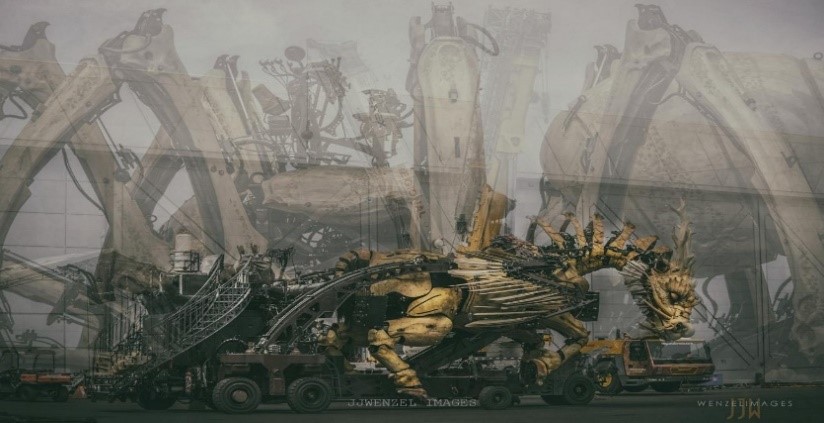
“Seeing with my mind” -- Photographer & digital artist, John Wenzel
An interview with the artist by Ricarda McFalls
This May, OLT patrons are invited to immerse themselves in a landscape of powerful visual narratives crafted by Spotlight Gallery-featured artist, John Wenzel (jjwenzelimages.com).
Originally from Montreal, John moved to Ottawa to complete a degree in Architecture at Carleton University and has remained here since. Graduating into the recession of the early 1990s, John would by chance take a job in the logistics industry, unexpectedly resulting in a career as a fleet supervisor, in which he still works today.
Passionate about photography from an early age, John would integrate the architectural ideology from his education into his artistic vision. Many of his works on display feature iconic Ottawa buildings and landmarks—though often with a real twist.
Over the years, John turned professional, deploying different genres and shooting a range of motifs, from pets to food, to social events. Increasingly, he adopted new media in the fine arts, deploying digital art in his bid to move from capturing stories to creating them. Over the course of his artistic journey, John has also developed a novel specialization producing on-location, themed portraiture, now a key component of his portfolio.
I recently met with to John at the Spotlight Gallery to learn more about his personal journey into digital arts as a medium for storytelling.
For those less familiar (including me), “digital arts” is broadly defined as any artistic practice that uses digital technology as an essential part of the creative process. While the use of technology in the creation of art was foreseen as early as the 1960s and first actively deployed in fine arts from the 1980s onward, its evolution and use has exploded in the past decades.
What led you down the digital path where you are now? You mention that your focus evolved – was it driven by the availability of tools, or experimentation?
I come from the age of film and darkrooms; thus, processing prints with chemicals and bursts of light were my limitations. Then a digital world emerged which allowed me to expand on my imagination. It moved my photography from ‘seeing with my eyes’ to ‘seeing with my mind’. I fell in love capturing a subject with a camera then immersing them into an alternate universe with the help of tools such as Adobe Lightroom, Photoshop, and a whole slew of different plug-ins.
What is your process? Do you start with a story you want to tell, or does the story emerge from an initial image upon which you build?
The ideas keep popping into my head! I must say, the architecture program at Carleton was the perfect environment of self-discovery; they train you on manifesting an idea into reality, whether it be physical or virtual. I currently have hundreds of ‘images’ in a journal, that I would love to work on, either as personal projects or for clients. The ideas are generated by anything that catches my interest, whether it is to wonder why a dog chases a squirrel, or to unpack the complexity of the human psyche or the heavy weight of climate change. I want to explore these themes in a thought-provoking manner.
"Then a digital world emerged which allowed me to expand on my imagination. It moved my photography from 'seeing with my eyes' to 'seeing with my mind'."

What led you to the diverse motifs displayed in this exhibition?
I’m displaying an evolution in my journey. The motifs evolve through the reflection of ideas, whether it’s the status quo, the latest global crisis, the need for greater world unity, or simply to exaggerate the hidden beauty just around the corner from us. I never felt I needed to keep a consistent style; each image takes on a different way of expressing itself to reveal its intent.
I am intrigued by the bending tower and leaning high-rise motifs that appear in several of your works. Tell us about the origin of these themes.
Curves, bursts of colour, stretches and blurs… these are some of the techniques I use to take an inanimate object and give it life; ‘motion’ is a better description of this tool. Giving an urban scape (one that you’ve probably walked by unnoticed, without really soaking in its potential beauty) a push to see it in a different setting, one that hopefully makes you see it in a thoughtful way.

Artificial intelligence (AI) increasingly features among digital art tools. Do you use it for some of your more complex visuals?
None of my images are generated with AI. I prefer to meticulously create these images piece by piece knowing everything is placed by the artist.
Finally, what is your connection to Ottawa Little Theatre?
The Ottawa Little Theatre wasn’t on our radar until recently meeting Albert Lightstone. We live in the same building, and he introduced us to this fun world of imagination. My wife and I have attended a couple plays and are looking forward to more.

